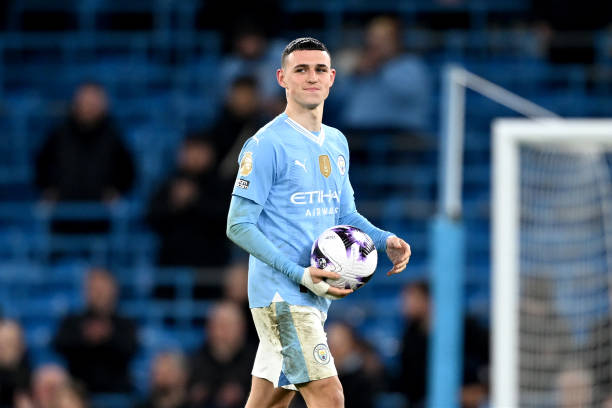
Introduction
Homegrown players have been pivotal to the legacy of English football clubs, blending sporting excellence with cultural identity. As the Premier League enforces homegrown player quotas and clubs invest heavily in academies, the significance of nurturing local talent has grown tremendously. This comprehensive exploration highlights the vital role of homegrown players in shaping club success, fostering fan loyalty, and securing financial sustainability.
1. Cultivating Club Identity and Fostering Fan Loyalty
Homegrown players serve as living symbols of a club’s values, creating a bridge between teams and their supporters.
Key Advantages:
- Stronger Emotional Bonds: Players raised within the club inspire fan loyalty and deepen community connections.
- Club Ambassadors: Icons like Steven Gerrard (Liverpool) and Harry Kane (Tottenham) embody their clubs’ spirit.
- Cultural Heritage: Passing club values from generation to generation through academy graduates.
Additionally, the loyalty and passion of homegrown players often influence team morale, driving performance during crucial matches.
2. Navigating Premier League Homegrown Quotas
The Premier League mandates that clubs include at least eight homegrown players in their 25-man squads, making academy development a strategic necessity.
Key Impacts:
- Regulatory Compliance: Reduces pressure on recruitment budgets.
- Incentive for Academies: Encourages clubs to produce talent internally.
- Sustainable Rosters: Limits reliance on expensive foreign transfers.
The quota system reinforces the importance of nurturing local talent while balancing squad diversity.

3. Financial Benefits and Market Impact
Investing in homegrown talent provides significant financial advantages, reducing transfer costs and increasing revenue opportunities.
Key Financial Gains:
- Cost-Efficiency: Producing players internally saves millions on transfer fees.
- Resale Value: Players such as Declan Rice (West Ham to Arsenal) demonstrate the market power of academy graduates.
- Loan Profits: Clubs earn revenue by loaning young players to lower leagues for experience.
Academies have become essential assets, contributing both players and profit to club portfolios.
4. Promoting Team Cohesion and Long-Term Success
Homegrown players often provide leadership and continuity, strengthening team chemistry and consistency.
Notable Examples of Success:
- Manchester United’s Class of ’92: Legends like Ryan Giggs, Paul Scholes, and David Beckham formed the core of a dominant era.
- Chelsea’s Academy Stars: The emergence of Mason Mount and Reece James fueled their UEFA Champions League triumph.
- Arsenal’s Hale End Graduates: Bukayo Saka and Emile Smith Rowe symbolize the club’s return to prominence.
The loyalty of homegrown players fosters a culture of commitment that is invaluable during periods of transition.

SUGGESTED FOR YOU
English Football Top 9 Most Controversial Moments in : Incidents That Shaped the Beautiful Game
5. Success Stories that Define Generations
Steven Gerrard (Liverpool): A local legend whose leadership and passion won numerous accolades. Marcus Rashford (Manchester United): An academy star renowned for his impact on and off the field. Phil Foden (Manchester City): A testament to Pep Guardiola’s faith in youth development.
6. Overcoming Challenges in Developing Local Talent
Despite its importance, developing homegrown players presents several obstacles.
Common Barriers:
- Intense Competition: Academy players face difficulty breaking into star-filled first teams.
- Short-Term Pressure: Managers under pressure often prioritize experience over youth.
- Talent Drain: Wealthier clubs frequently recruit from smaller academies.
Overcoming these challenges requires patience, investment, and strategic integration of youth prospects.

7. The Future of Homegrown Talent in English Football
With growing investments and initiatives, the future of English football lies in local talent development.
Key Trends Shaping the Future:
- Enhanced Academy Infrastructure: Clubs are building state-of-the-art facilities and hiring top-tier coaching staff.
- FA and EPPP Initiatives: Programs like the Elite Player Performance Plan (EPPP) streamline talent pipelines.
- Increased Opportunities for Youth: Top clubs are integrating more academy players into senior squads.
- Focus on Inclusivity: Developing talent from diverse backgrounds to enrich the sport.
CHECK OUT TOP 3 FREE BETTING PREDICTION SITES
Accuratepredict.com Soccerpredictions.net Betloy.com
Conclusion
Homegrown players remain integral to the identity, financial sustainability, and competitive success of English football clubs. They embody the passion and values of their teams, inspire loyalty from fans, and represent the future of the sport. As clubs continue to invest in their academies and cultivate local talent, homegrown players will play an even more pivotal role in defining English football’s legacy.
Discover how homegrown players are shaping the future of English clubs and why investing in local talent is key to long-term success.









